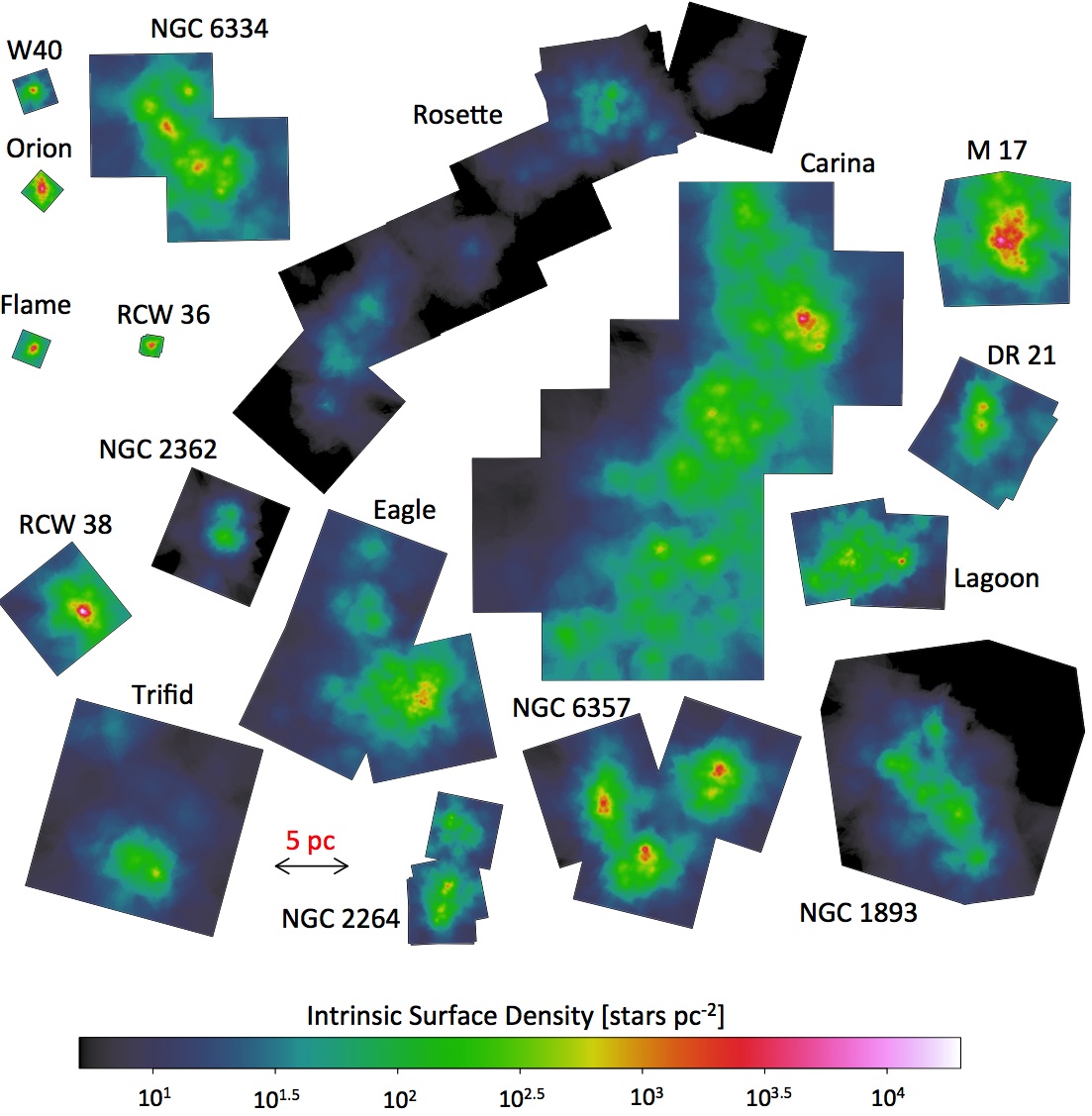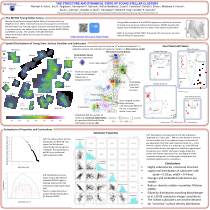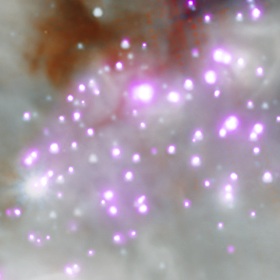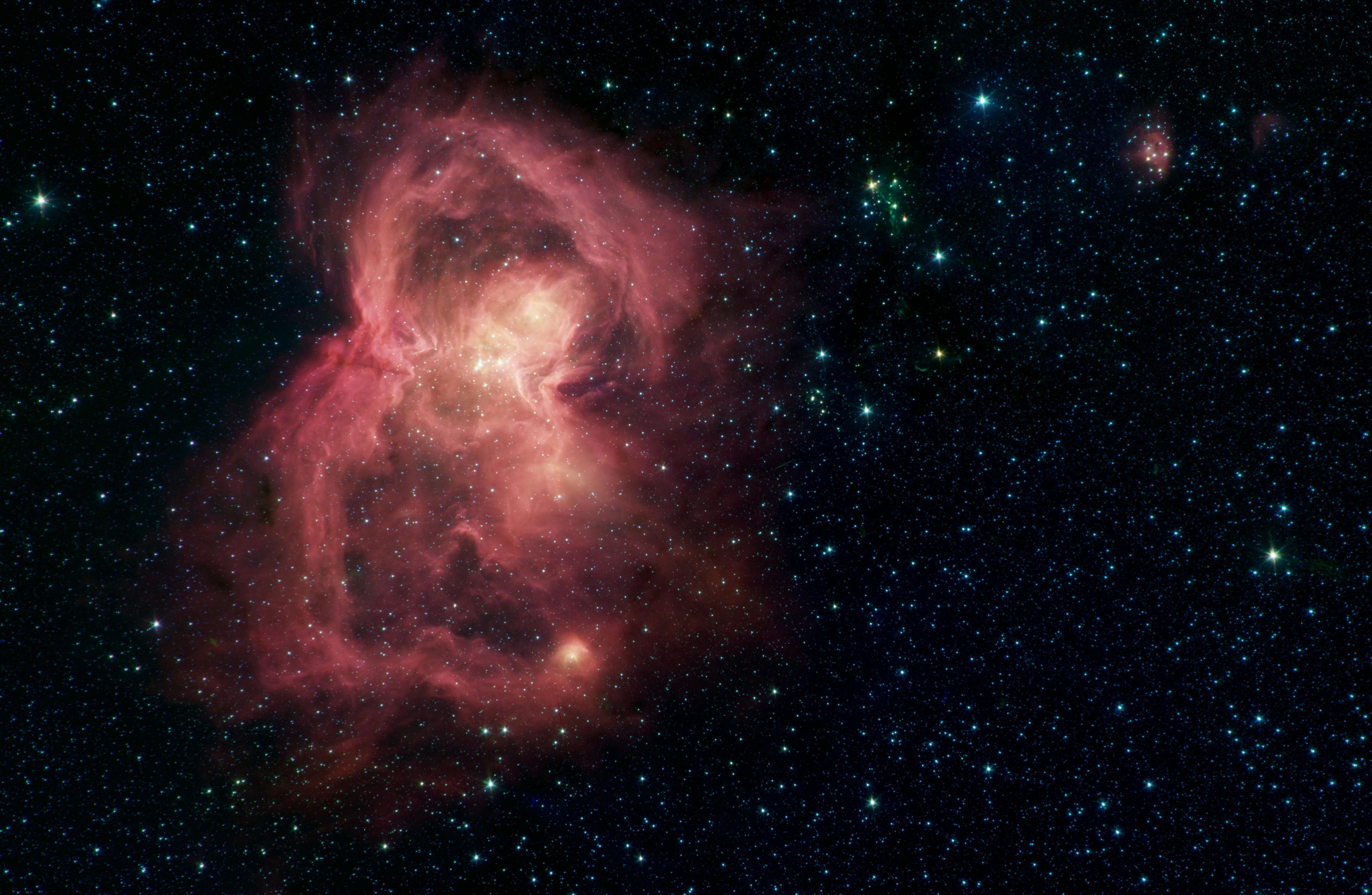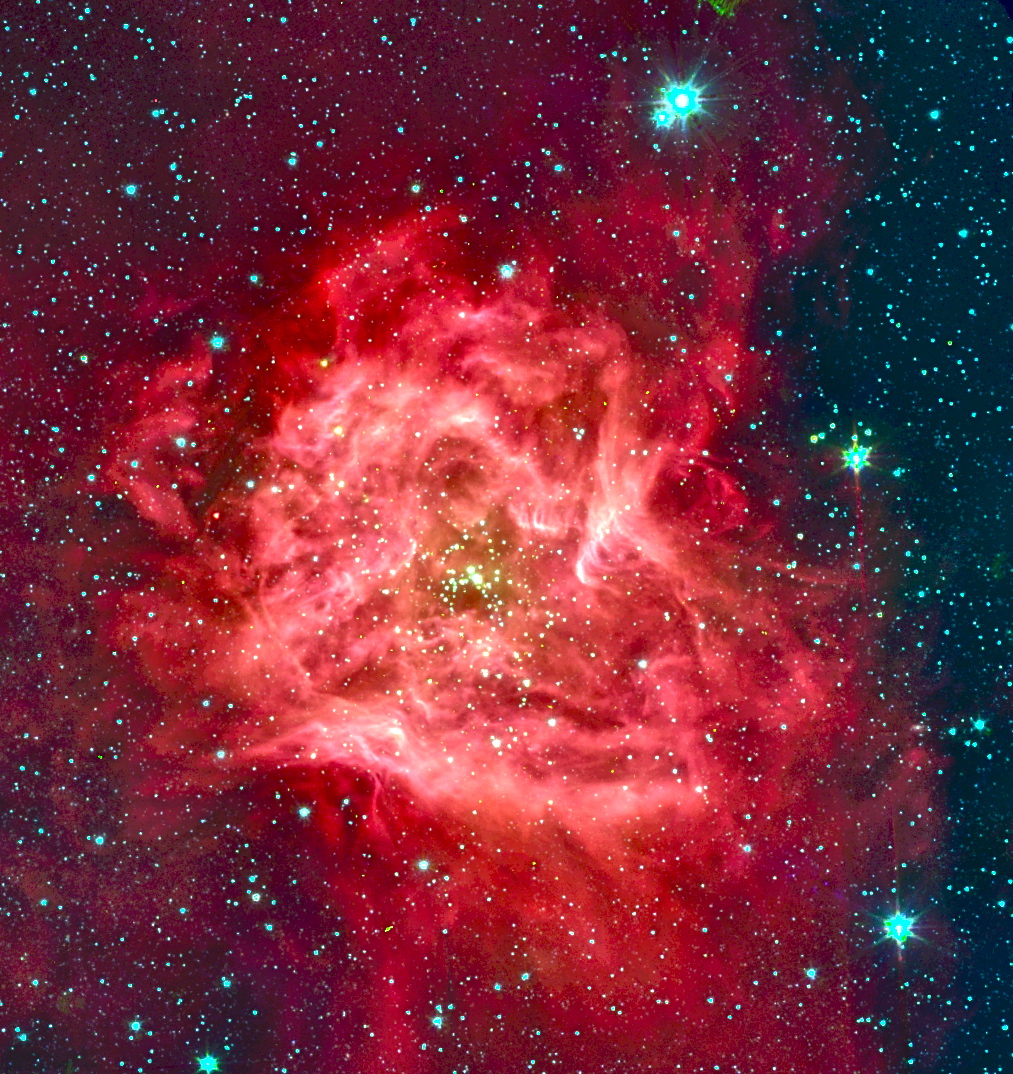Using catalogs of young stellar objects from our previous studies combined with new astrometric measurements of their motions provided by the European Space Agency's Gaia mission, we obtained some of the first direct measurements of the expansion of newly formed star clusters and associations.
Our study demonstrated that most of the stellar groups in the star-forming regions we investigated are dynamically hot and in a state of expansion. Although many of the regions contain multiple groups of stars, and theory predicts that these subclusters may merge to form more massive clusters, we found no observational evidence of mergers.
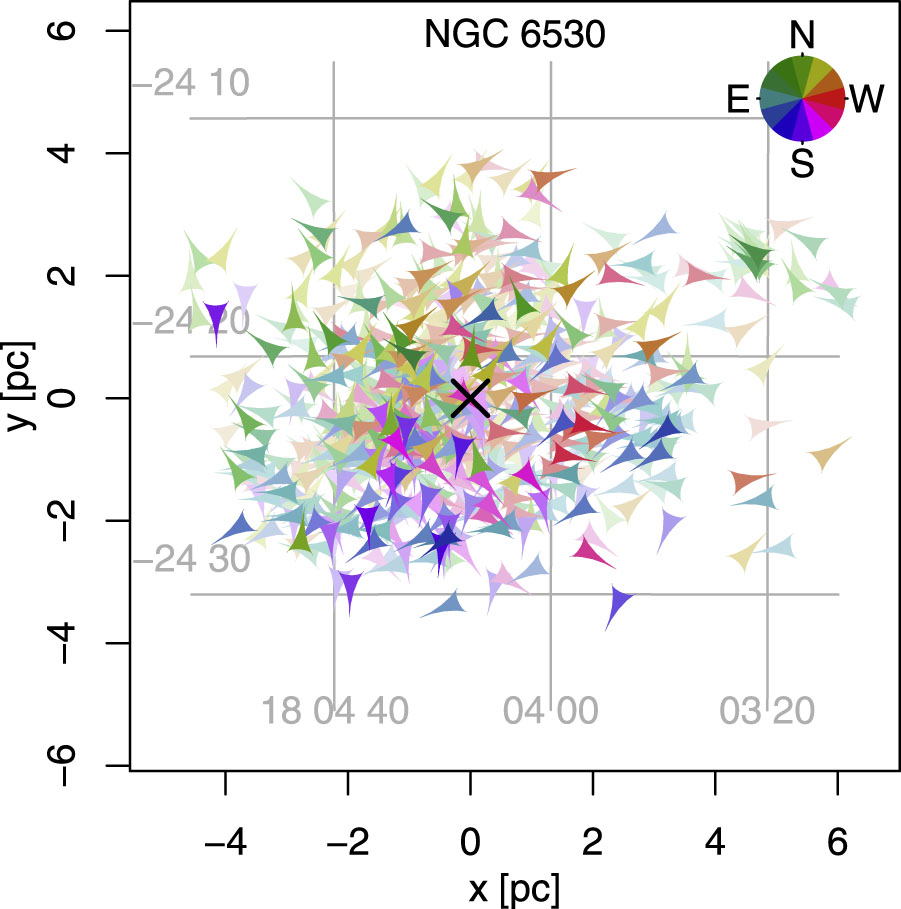
Spatial distribution of stars in NGC 6530, with arrows to indicate the direction they are moving. The arrows have been color coded based on the direction they are pointing, so that bulk velocity gradients (e.g., expansion) will produce a visible color gradient.



